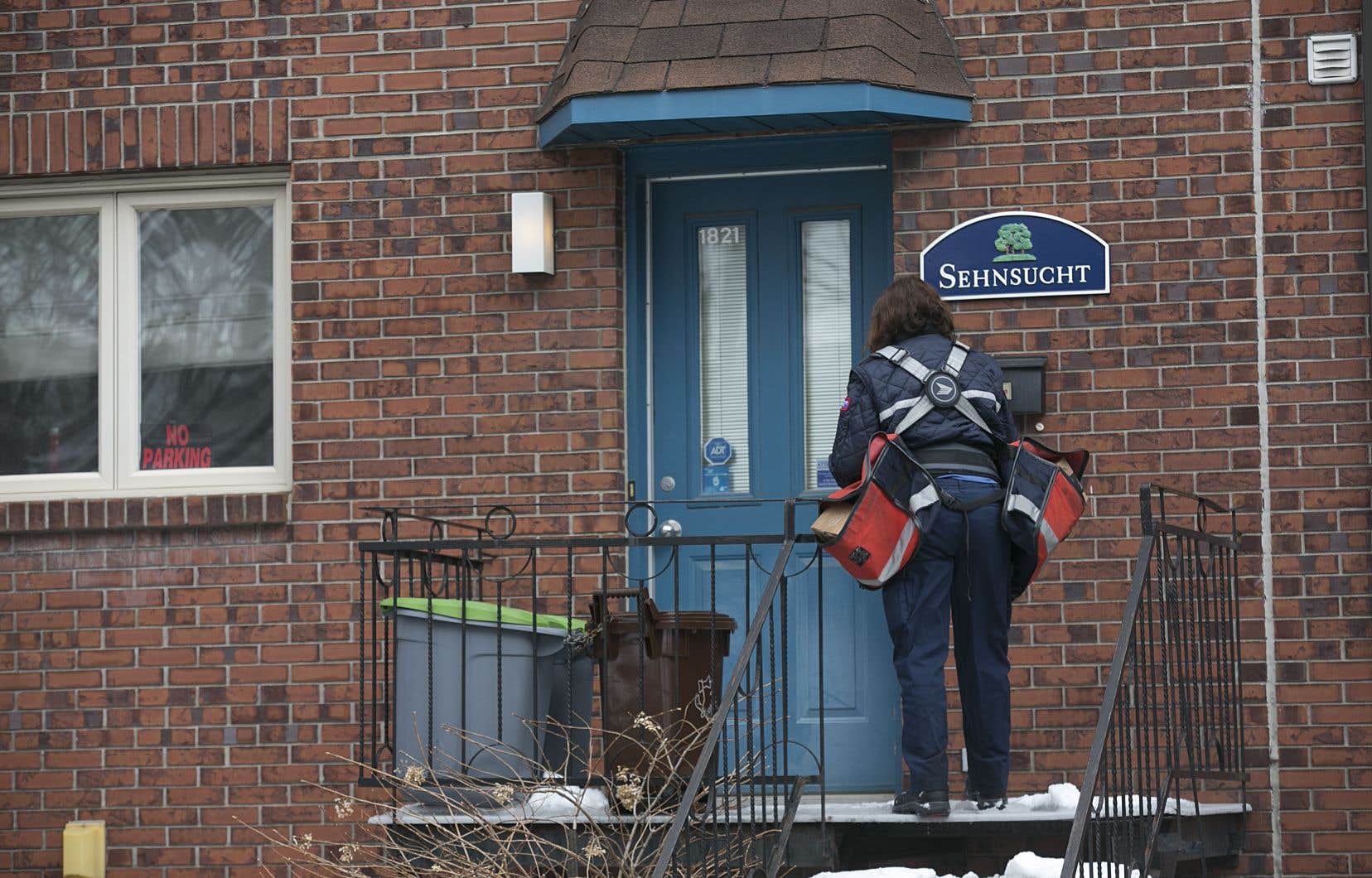Many older people, isolated at home, are unaware of the community and social services that could support their well-being and independence. Could courtesy home visits help avoid human tragedies? Canada Post mail carriers would like to play a social role when they deliver mail to vulnerable people.
Rachel Ouellet had the idea more than four years ago. The Rimouski mail carrier had a signature to collect from a 96-year-old lady for mail from the Société d’assurance automobile du Québec (SAAQ). Even before opening the letter, the client understood that she had a chance of losing her driver’s license.
“She started crying, she was in panic. She was losing her last autonomy of life. I told myself that I couldn’t leave her like that. She wasn’t able to read, she was too nervous,” says the Canada Post employee.
Mme Ouellet spent about an hour with the woman to help her understand the letter, call the SAAQ for clarification and contact the woman’s son to suggest he visit his mother.
After this episode, the mail carrier began to think about the possibility of formalizing a certain role of vigilance for seniors living at home, an increasing number of whom are in her region. “We pass by houses five days a week anyway,” she pleads. I know where people who live alone live. During the pandemic, sometimes we were the only person these people had seen during their day. »
Research has proven him right.
In 2021, a report from the VIES team (Aging, social exclusions and solidarity), under the responsibility of Patrik Marier, professor in the Department of Political Science at Concordia University, concludes that it would be beneficial to take advantage of the vast Canada Post’s physical and human infrastructure to build connections with the elderly, isolated or vulnerable.
In January 2023, the National Institute on Aging in Toronto released the report entitled Special delivery: growing old in the right place thanks to the postal service. It states that letter carriers enjoy strong public trust, which puts them in an advantageous position to provide community support services.
Meanwhile, Canada Post is experiencing an existential crisis, looking for new sources of revenue with the decline in the volume of letters and competition from private companies for parcels. The House of Commons advised it in 2016 to expand its range of services.
Examples from abroad
The National Institute on Aging paper reports that several postal services around the world, including France, Japan and the United Kingdom, now offer community support, usually for a fee. It is suggested to draw inspiration from the system Call&Check of Jersey, whereby postal workers make up to two five-minute visits per week to check on the well-being of registrants, deliver prescribed medications and remind them of upcoming medical appointments.
Letter carriers are not social workers, but they could make referrals to a third party, who would follow up. Many community organizations would be ready to get on board.
Patrik Marier would like to set up a pilot project in Quebec, which would fit with the government’s objective of allowing more citizens to age at home. “The letter carriers are not social workers, but they could make referrals to a third party, who would follow up. Many community organizations would be ready to get on board,” believes the gerontology expert.
A Canada Post employee in the Saint-Michel district of Montreal, Sébastien Metzger Bogucki notes that immigrants could also benefit from visits from his colleagues and his own. “Some people sometimes wait for us to come by so that we can explain things to them that they have received by mail,” says the postman.
The latter believes that they could signal several types of socio-economic situations. “When we enter the blocks, just by the smell, we can often understand that something is not working in terms of public health, like mold or drug use,” he says.
This kind of role could help give meaning to the work of postal employees, believes Mr. Metzger Bogucki. “If you ask me if I prefer delivering Publisacs or having human contact with people, I have no trouble choosing,” he emphasizes.
The union is in the game
The Union of Postal Workers (STTP) actively supports the idea of setting up a vigilance service for the elderly. He promoted it in his recent campaign Towards sustainable communitiesa plan to reinvent Canadian postal services.
“As part of their joint committee on service expansion, CUPW and Canada Post have studied the feasibility of such a service,” the union wrote in an emailed statement, adding that its members will continue to push for let it be done. “An increased range of services will also ensure the future of the public postal service and protect the jobs associated with it,” he wrote.
For its part, Canada Post did not respond to our requests for information. Rachel Ouellet and Patrik Marier say they feel little enthusiasm from the leaders of the state corporation. It must be said that the financial benefits of such a measure are not well defined for the latter, which is expected to be self-financing.
Mme Ouellet believes that change will have to come from political will. This is why she hopes that a meeting can be organized on this subject with the federal Minister of Public Services and Procurement, Jean-Yves Duclos, responsible for Canada Post.
Contacted by The duty, Mr. Duclos’s office did not give its opinion on the project, contenting itself with thanking the National Institute on Aging for its report. “It is essential that Canadians continue to receive the quality service they deserve, and in a sustainable manner, from Canada Post. It is all the more important to create a favorable context so that seniors can age with dignity,” he said. It remains to be seen whether the government will choose to combine these two priorities.
